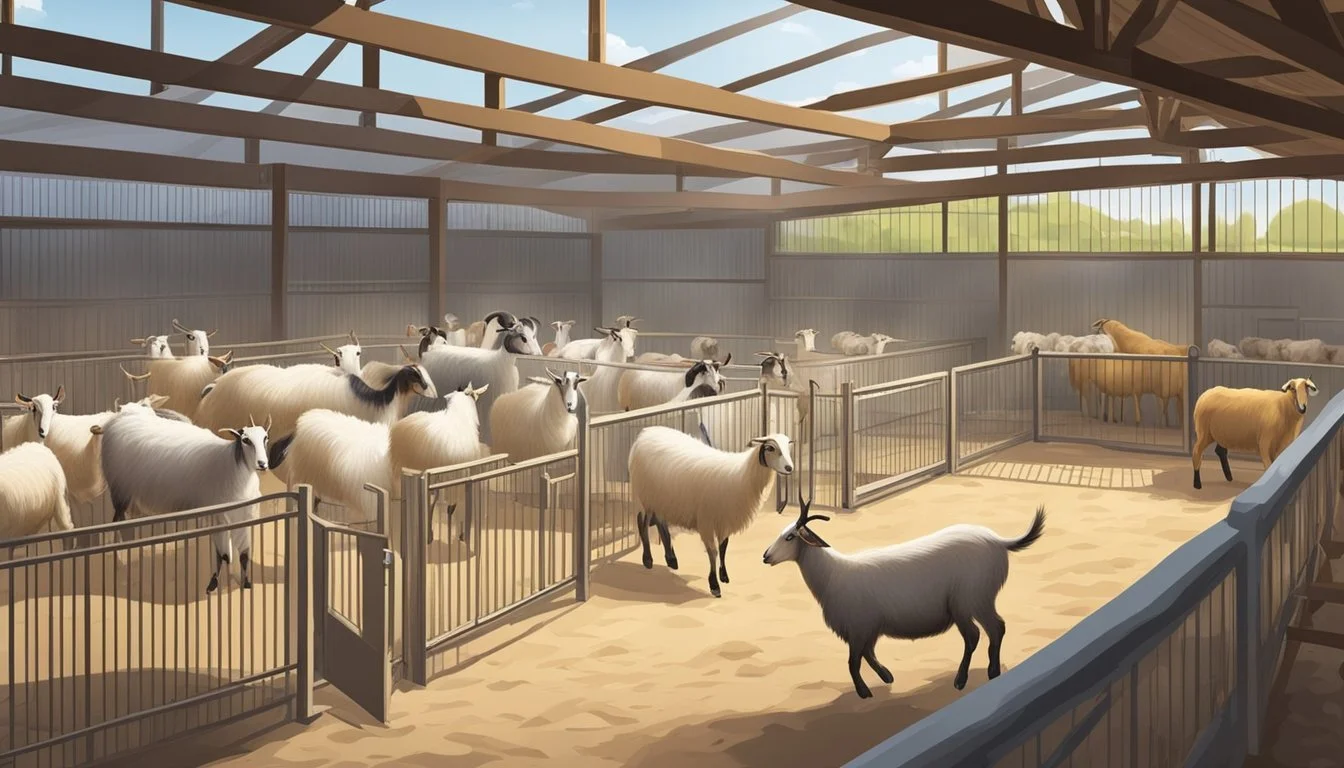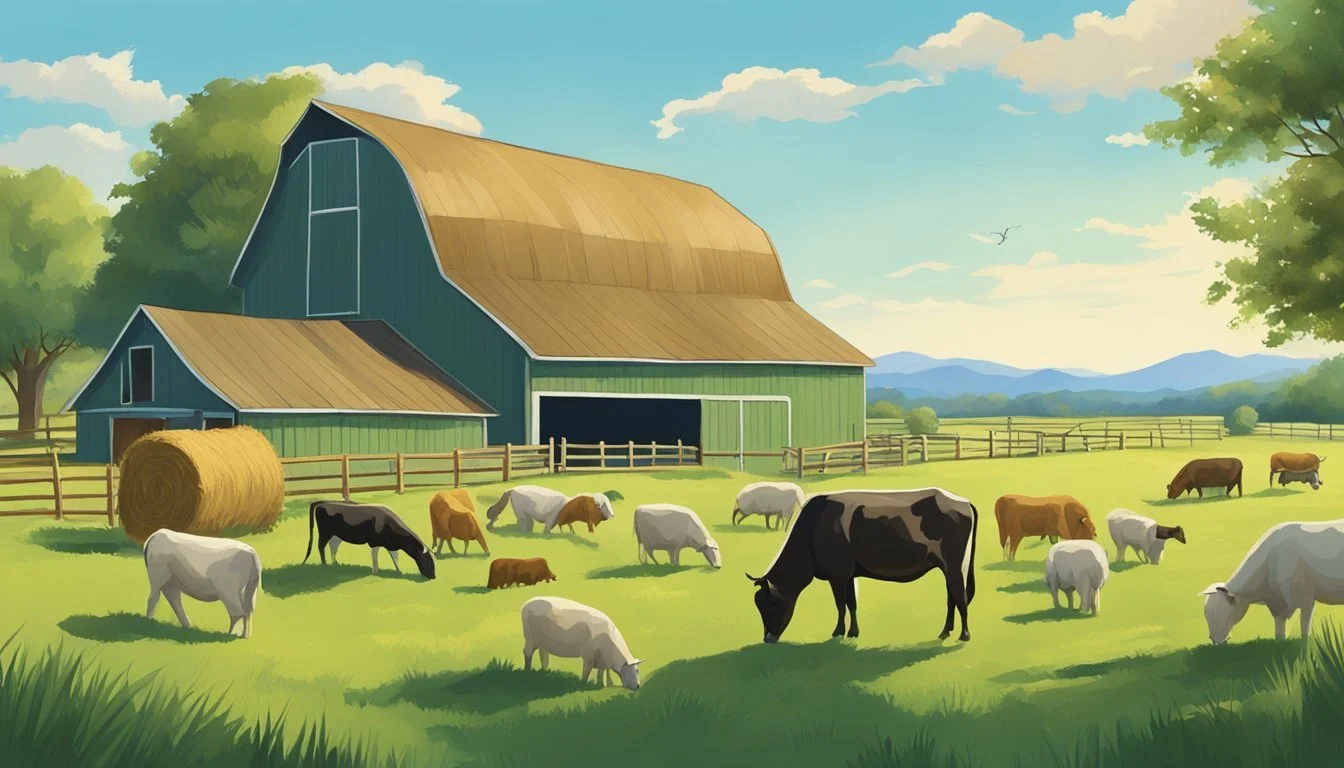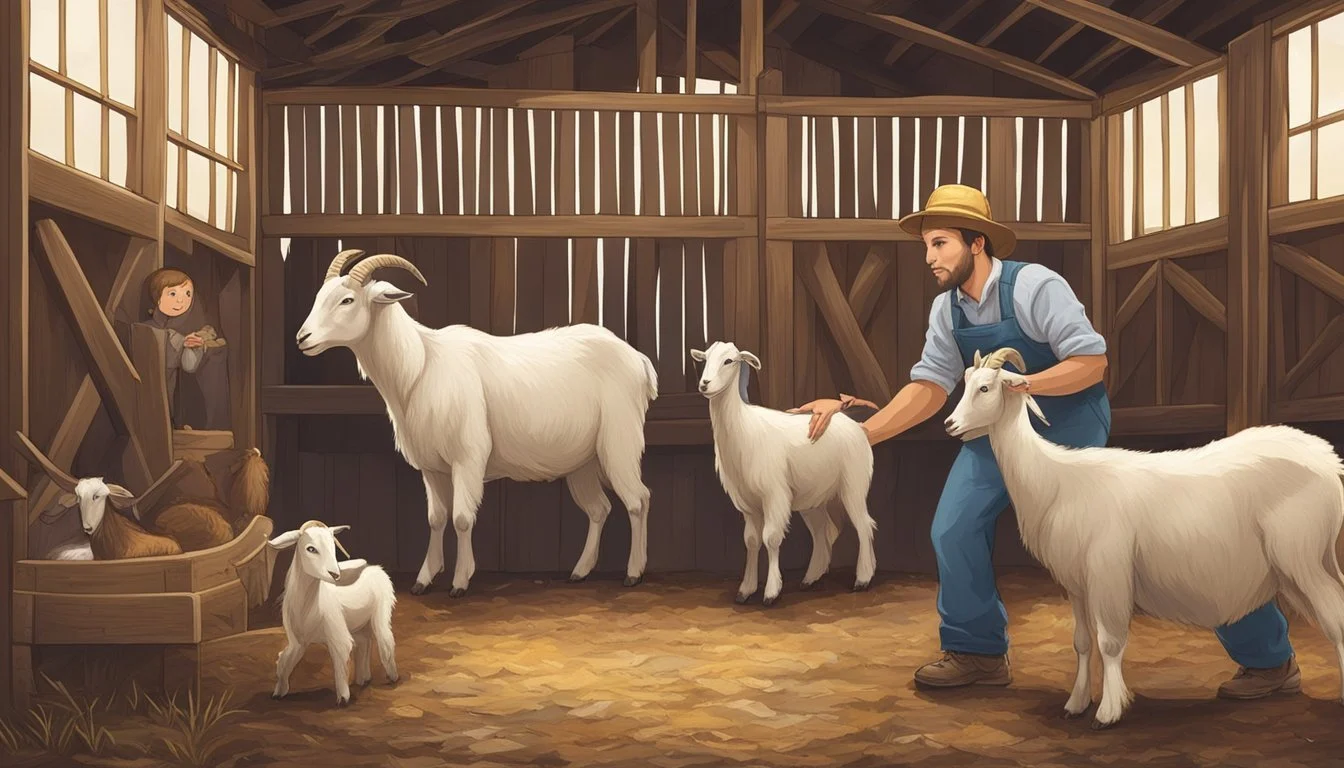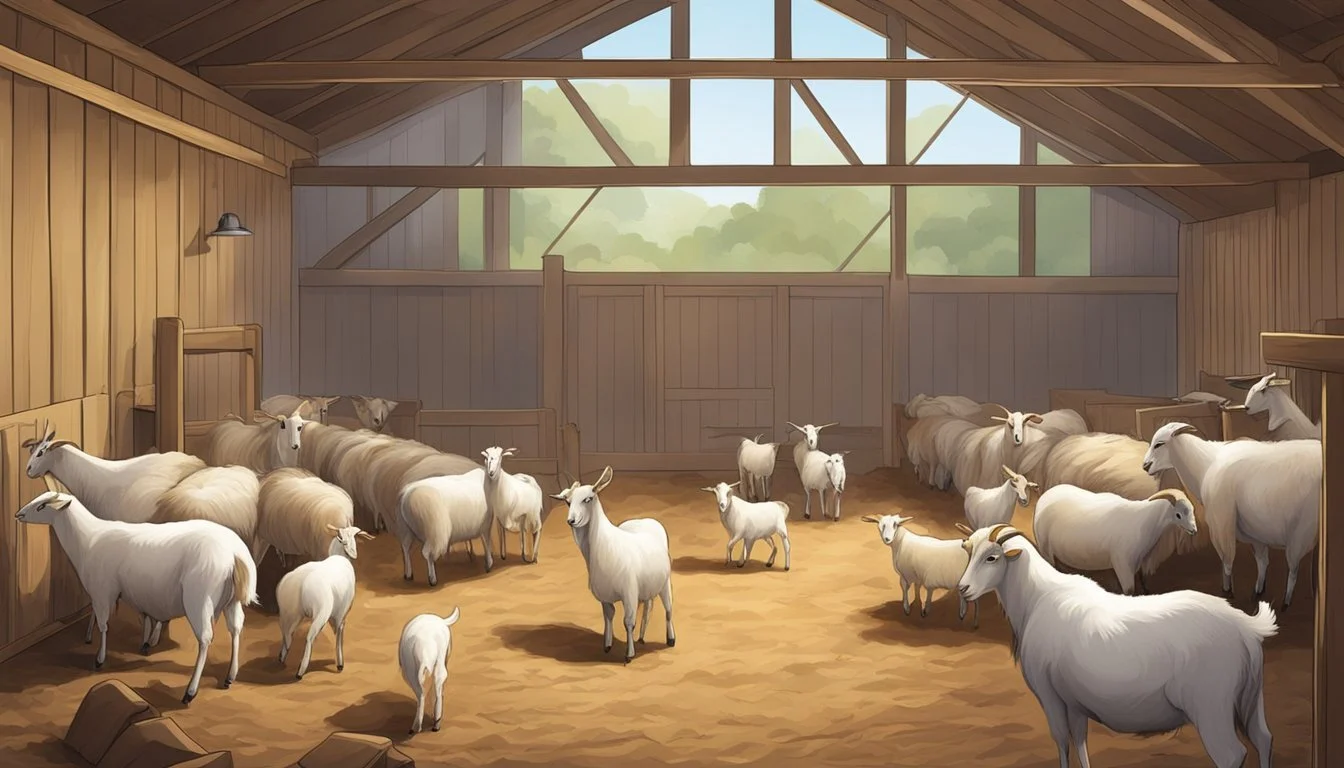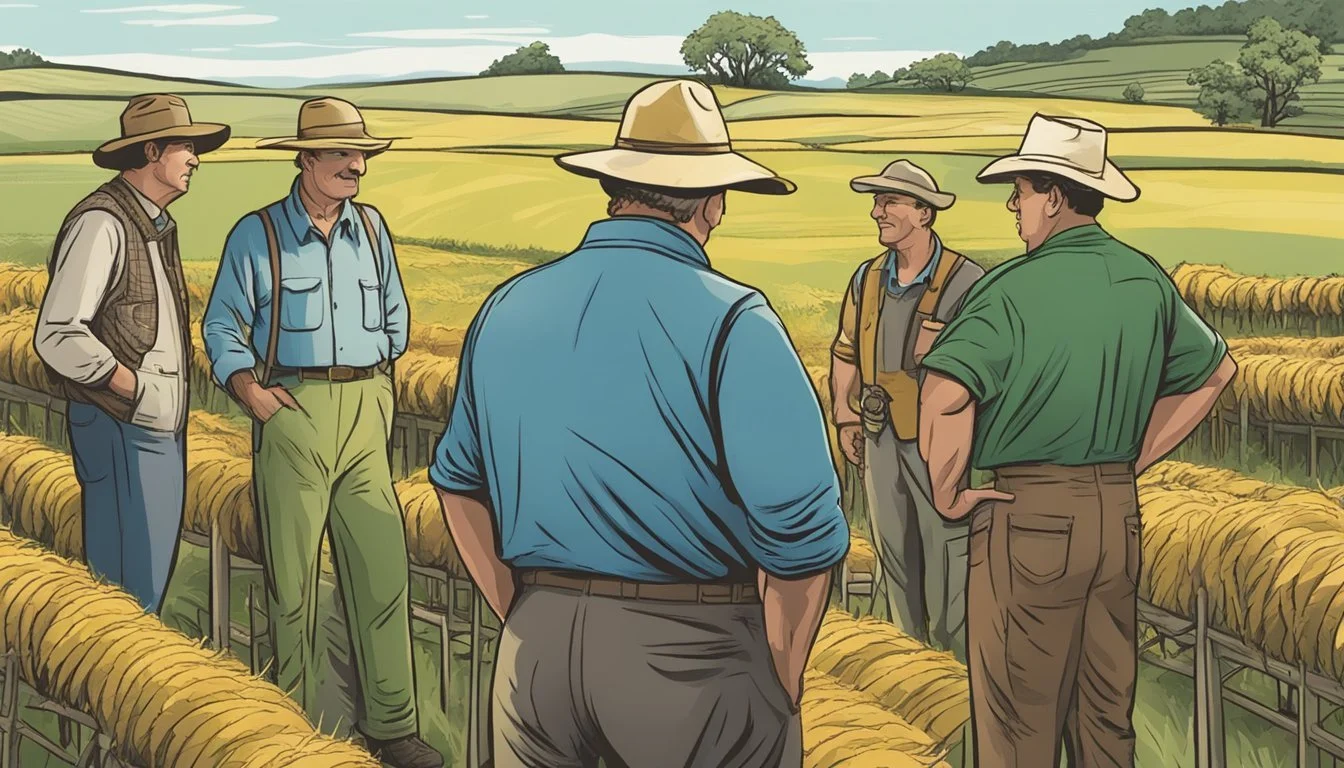What are the Best Practices for Kidding Season Management
Essential Tips for Goat Breeders
Kidding season management is a crucial aspect of raising small ruminants, such as goats and sheep, and determines the success of breeding programs. Best practices for kidding season begin with comprehensive preparation that ensures the health and safety of both the newborns and their mothers. Preparations include evaluating the flock's or herd's nutritional needs, providing a clean and safe birthing environment, and being equipped for potential birthing complications.
Well before the first signs of labor, producers should focus on nutrition, housing, and health monitoring. A nutritious diet for pregnant animals is vital for healthy offspring and eases the birthing process. Shelter should be draft-free, dry, and well-bedded to protect newborns from harsh weather conditions. Regular health checks and vaccinations are instrumental in preventing the spread of disease during this vulnerable period.
In addition to these preparations, having the right tools and knowledge on hand is essential. This includes understanding normal birthing behaviors, knowing how to handle birthing difficulties, and caring for the newborns immediately after birth. Producers should be knowledgeable in basic care techniques for kids and lambs, such as ensuring colostrum intake, umbilical cord care, and temperature regulation. With these best practices in place, small ruminant owners can look forward to a rewarding kidding season.
Understanding the Kidding Season
Kidding season represents a crucial phase in the life cycle of small ruminants, and appropriate management during this time is instrumental for the health of the new offspring and the future productivity of the herd.
Defining Kidding Season
Kidding season is the period when female goats (does) give birth, also known as parturition. It is comparable to lambing season in sheep. This season occurs at various times throughout the year based on the breed and the specific management practices of the operation. For most small ruminants, this time is meticulously planned by producers to ensure that the newborns, or kids, arrive during a time when the environment is conducive to their survival and the farm is prepared for their care.
Significance of Kidding in Small Ruminant Operations
The significance of a successful kidding season in small ruminant operations cannot be overstated. It is a high-stakes time where the health and survival rates of newborn kids can directly impact the economic viability of a farm. Well-managed kidding seasons contribute to the growth and maintenance of the flock or herd. During this season, crucial decisions about goat reproduction and genetics come to fruition. Attention to the details of goat reproduction and parturition is vital, as it sets the foundation for the herd's future productivity and sustainability.
Precision in planning and vigilance during kidding ensures that the investment made in genetics and herd health throughout the year safeguards the survival of newborns. Proper understanding and management during the lambing and kidding season are essential for the longevity and success of any small ruminant farm.
Preparation for Kidding
Preparing for kidding is critical to ensure the health and safety of both does and kids. This involves setting up appropriate facilities and gathering necessary supplies in advance.
Housing and Facilities
Good kidding management starts with proper housing. Facilities should be clean, dry, and shielded from harsh weather. Well-bedded pens are essential, reducing the risk of disease and keeping newborns warm. Each pen should be spacious enough to accommodate the doe and her offspring comfortably, allowing for easy movement and monitoring by labor.
Supplies Checklist
A well-prepared supplies checklist is as follows:
Towels: To clean and dry kids immediately after birth.
Disinfectants: For sanitizing hands and equipment.
Gloves: To maintain hygiene during the birthing process.
Thermometer: To check for hypothermia in newborns.
Colostrum or colostrum replacer: Vital for kid's immunity.
Feeding equipment: Such as bottles and nipples for potential bottle feeding.
Basic first aid kit: To address any immediate medical issues.
Each item serves a distinct purpose, from ensuring cleanliness with towels to providing emergency care with a first aid kit. It is important for those managing kidding to have all necessary equipment at hand to act promptly when required.
Nutrition and Health Management
Proper nutrition and health management are fundamental to a successful kidding period, ensuring that does maintain optimal body condition and the health of both mothers and kids is supported.
Feeding the Does
During the breeding season, careful feeding strategies are essential for does to prepare for pregnancy. Known as “flushing,” increasing the energy intake can enhance ovulation rates. High-quality forage and hay should form the basis of their diet. Producers may consider incorporating corn as an energy-dense supplement to improve the does' body condition, especially for those that are underweight.
Nutritional Needs during Gestation
As gestation progresses, the nutritional needs of does increase. By the last third of pregnancy, energy and protein requirements can rise significantly due to fetal growth. At this stage, a diet rich in selenium and vitamin E can help prevent metabolic conditions such as ketosis, especially critical as does approach parturition. Body condition scoring is a useful tool for monitoring their nutritional status and should be conducted regularly to adjust dietary inputs and prevent the onset of disorders associated with poor nutritional management.
Breeding and Genetics
Successful kidding season management hinges on strategic breeding and astute genetic selections. Proper understanding and application of these concepts are instrumental in reaching optimal herd improvement and productivity goals.
Selecting Breeding Stock
The selection of breeding stock is a critical step that directly affects the outcomes of the kidding season. Emphasis should be placed on the body condition score (BCS) of does, as it is a reliable indicator of health and breeding readiness. A proper BCS, typically between 2.5 to 3.5 on a 5-point scale, suggests that the doe is neither underweight nor overweight, both of which can negatively influence conception rates and kidding outcomes.
Genetic Considerations
Genetics play a pivotal role in the traits and productivity of ensuing generations. When considering genetics, one should look for breeds that exhibit strong maternal traits, growth rates, and resistance to diseases. Employing rigorous selection processes based on heritable traits ensures the long-term improvement and sustainability of the herd. Genetic diversity within the herd should be maintained to prevent inbreeding-related complications.
Care During Labor and Delivery
Proper management during labor and delivery can significantly affect the health of both newborns and mothers. Close monitoring and readiness to assist are crucial for the successful delivery of small ruminants.
Monitoring Labor
During labor, one must vigilantly watch for signs that indicate the start of the birthing process, such as the doe or ewe's water breaking and the onset of contractions. Clear to bloody mucus discharge from the vulva is a typical early indicator. A normal rise in contractions will lead to the appearance of the amniotic sac and the beginning stages of delivery. A rise in the animal's temperature can also signal impending labor. Should the labor extend beyond the expected timeframe without progress, this could signify dystocia, and one should be prepared to offer assistance or seek veterinary help.
Assisting During Delivery
If the delivery does not progress normally, assistance may be required. It's essential to have clean hands and wear gloves while providing assistance. The proper use of a lambing or kidding puller can aid in guiding the newborn through the pelvic canal in a delivery position that avoids injury to both the mother and the offspring. Use of a lubricant can facilitate a smoother delivery when manual assistance is necessary. Following birth, the application of iodine on the newborn's umbilical cord can prevent infection. Ensuring the placenta has been expelled is key, as retained placenta can lead to health complications. If necessary, a syringe can be used to help clear the newborn's airways. All equipment should be sterilized and ready at hand to address any issues promptly and efficiently. If signs of dystocia are apparent, there should be no delay in seeking veterinary assistance.
Neonatal Management
Proper neonatal management in the first hours after birth is crucial for the health and survival of kids and newborn lambs. Ensuring they receive adequate colostrum, monitoring their health, and performing necessary interventions are key steps in securing a strong foundation for their future development.
Caring for Newborns
Immediately after birth, it is imperative to clean and disinfect the umbilical cord using iodine to prevent infection. Newborns should be dry and placed in an environment that protects them from hypothermia, maintaining a comfortable temperature. Bonding between the ewe or doe and her offspring should be observed to ensure proper attachment and subsequent colostrum intake. Colostrum, rich in essential nutrients, is the first defense against disease and must be consumed within the first few hours. If the dam has inadequate colostrum, a high-quality colostrum replacer may be administered with a syringe.
Checklist for Immediate Care:
Disinfect umbilical cord with iodine solution.
Ensure lambs/kids are dry and maintain adequate temperature.
Monitor bonding between dam and offspring.
Confirm ingestion of colostrum within the first 2-4 hours;
If necessary, provide colostrum replacer.
Postnatal Interventions
Within the first days, postnatal interventions such as castrating and tail docking may be carried out to meet management or breed standards. These procedures should only be performed by experienced individuals or veterinarians to minimize stress and ensure the wellbeing of the lambs or kids. Monitoring for vigorous health is a continuous process, assessing the alertness and activity levels of the newborns. Temperature checks should be routinely done to promptly identify and treat any issues of hypothermia or illness.
Key Interventions After Birth:
Perform castration and tail docking if required, following pain management protocols.
Conduct regular health checks with focus on temperature and vigor.
Keep a record of interventions and health observations for each lamb or kid.
Post-Kidding Care
Effective management during the post-kidding phase is crucial for the health and productivity of both the newborn kids and their mothers. Attention to afterbirth care and the dam's health can prevent many common complications.
Afterbirth Care
The afterbirth, or placenta, should pass from the doe within a few hours of delivery. Retained afterbirth can lead to infections, so it's critical to observe the doe and ensure that the process is complete. Providing kids with colostrum within the first hours is vital, as it is rich in antibodies that protect against diseases such as Clostridium perfringens. Starting a CDT vaccination program right after birth will safeguard against tetanus and other clostridial diseases. Ensure that the kids are in a clean, dry environment to discourage infection.
Monitoring Dam Health
Post-kidding, closely monitor the health of the ewe or doe to spot signs of mastitis, an infection of the udder. Regularly check the udder for any signs of swelling, heat, hardness, or redness. During lactation, cleanliness is paramount; contaminated udders can transmit harmful bacteria to the offspring. Implement a tailored vaccination program for the mother to boost her immune system and enhance the protective quality of her colostrum. Monitor her appetite and behavior as these are key indicators of her overall health.
Record Keeping and Management
Effective management during kidding season is crucial for a small ruminant operation's success. It hinges on meticulous record-keeping and evaluation to maximize profitability and ensure the health and productivity of the goat herd.
Documenting Kidding Data
During kidding season, it is imperative to document each birth with precision. Records should include the date, time, sex of the newborns, the ease of delivery, and any assistance provided. Monitoring these details helps identify patterns and prepare for future seasons. For instance, they record the use of Goat Herd Record Sheets as part of their systematic approach to tracking kidding data, which is instrumental in streamlining the process.
Evaluating Kidding Outcomes
Post-kidding, a detailed review of the outcomes is essential. They assess the overall health and survival rate of kids, comparing them against the records to make informed decisions for herd improvement. Data scrutiny aids in pinpointing strategies that were successful and those that require modification. In a small ruminant operation, this evaluation not only impacts immediate kidding management but also drives long-term profitability. Through webinar series and educational resources, producers can learn about strategies to improve their kidding season management based on the collected data.
Providing Education and Resources
Effective management during the kidding season is essential for the health of the herd and the financial wellbeing of the farm. For producers looking to enhance their knowledge and skills, a wide range of education and resources are available.
Hosting Workshops
Workshops provide direct, hands-on learning experiences for small ruminant producers. They can participate in events such as those organized by Michigan State University Extension, which offer valuable insights into best practices for kidding season management. These workshops are typically led by experts in the field and offer a blend of theoretical knowledge and practical skills that are essential for successful outcomes.
Online Learning Platforms
Producers who prefer flexible learning schedules can benefit from online learning platforms hosting a variety of courses and webinar series. These digital resources offer comprehensive education through modules that can be accessed at the user's convenience. For instance, webinar series might cover topics ranging from preparing the kidding area to advanced neonatal care, ensuring producers have access to the latest and most effective strategies.
Ensuring Animal Welfare
The key to successful kidding season management lies in upholding high standards of animal welfare, which involves adherence to ethical breeding practices and a deep sense of responsibility towards the flock. These practices are not only essential for the health and well-being of the goats but also for the longevity and sustainability of the breeding program.
Ethical Breeding Practices
Ethical breeding encompasses a range of practices designed to promote the health and well-being of the goats. This includes genetic diversity to prevent inbreeding, which can lead to a host of health issues and congenital defects. Selective breeding should also focus on traits that do not compromise the goats' quality of life, such as good mothering abilities and resistance to local diseases. Breeders must consider the long-term impact of their choices on the overall health of the flock.
Genetic Management: Aim to enhance genetic variation and avoid inbreeding.
Health-Focused Selection: Choose traits that support vitality and reduce susceptibility to illness.
Responsibility Towards the Flock
Maintaining a responsible attitude towards the flock is manifested through diligent care and the provision of a safe, clean, and stress-free environment. Preparations should include readiness for various birthing scenarios and the ability to address complications promptly. Adequate nutrition, proper shelter, and routine health checks are fundamental to fostering a healthy birthing process.
Nutrition & Shelter: Ensuring access to balanced feed and protection from harsh weather.
Health Monitoring: Regular veterinary check-ups and immediate intervention when issues arise.
Ethical breeding practices and a profound responsibility towards the flock form the cornerstone of animal welfare during kidding season. By integrating these elements, breeders can ensure a successful, humane, and ethically managed kidding season.
Marketing and Product Management
In the world of goat farming, understanding and capitalizing on market trends is essential for the profitability and sustainability of the enterprise. Effective marketing and product management are crucial for goat farmers, particularly during kidding season when new stock becomes available for meat and dairy production.
Meat and Dairy Products
When it comes to meat and dairy products from goats, farmers must be aware of the variety of products they can offer. Fresh meat is always in demand, but there is also a growing market for value-added products such as cheese, yogurt, and even soap made from goat's milk. It's pivotal for farmers to monitor market prices and demand to optimize their mix of meat and dairy products accordingly.
Branding and Sales Strategies
Branding plays a vital role in differentiating goat products in a competitive market. A coherent brand strategy can elevate a goat farm's products, creating an identity that resonates with consumers. This involves not just a logo or a tagline, but also the story of the farm, its practices, and its commitment to quality. Farmers may implement direct sales through farmers' markets or online platforms, as well as wholesale strategies to local restaurants or stores. Building relationships with customers through consistent sales efforts and high-quality products is fundamental to driving repeat business and expanding market reach.
Conclusion
Kidding season demands diligent preparation and care. They should start with a thorough understanding of goat reproduction and continue into the post-birth period. The key is to ensure the health and safety of both the doe and the kids by following evidence-based practices.
Owners must focus on:
Conducting regular health management practices, such as vaccinations and deworming before breeding begins.
Preparing a sanitary, dry, and well-ventilated kidding area.
Evaluating body condition, administering proper nutrition, and potentially "flushing" the does to increase the chances of successful breeding.
The goal is a sustainable approach that includes the doe's health management and the neonatal care of kids. Owners can enhance kidding outcomes by seeking additional information and guidance, such as the guides provided by Penn State Extension and other reputable sources. They should remain observant and responsive to the needs of their goats throughout the season.
Ultimately, successful kidding season management is characterized by the well-being and productivity of the goat herd. Such meticulous attention to detail ensures not only the thriving of individual animals but also the health of the entire herd, laying a solid foundation for future breeding seasons.

